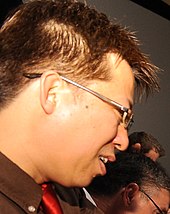
Punch-Out!! is a 1984 arcade boxing video game developed by Nintendo R&D3 and published by Nintendo. It was the inaugural game in the Punch-Out!! series.

Mario Power Tennis is a 2004 sports game developed by Camelot Software Planning and published by Nintendo for the GameCube. The game is the sequel to the Nintendo 64 title Mario Tennis, and is the fourth game in the Mario Tennis series. The game was ported for the Wii in 2009 as part of the New Play Control! series, and was also re-released as a Nintendo Selects title in 2012. A companion handheld game, Mario Tennis: Power Tour, was also released on Game Boy Advance around the same time as the original GameCube release, bearing the same title as Power Tennis in Europe.

Kirby Super Star, released as Kirby's Fun Pak in PAL regions, is a 1996 anthology action-platform game developed by HAL Laboratory and published by Nintendo for the Super Nintendo Entertainment System. It is part of the Kirby series of video games by HAL Laboratory. The game was advertised as a compilation featuring eight games: seven short subsections with the same basic gameplay, and two minigames.
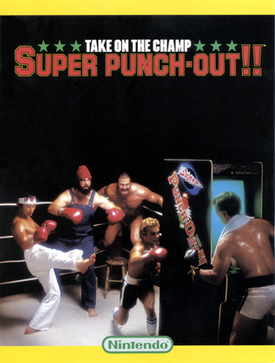
Super Punch-Out!! is a 1984 arcade boxing game by Nintendo. The sequel to Punch-Out!!, it follows the same format while adding several new features and characters. Along with punching, blocking and dodging, players also have the ability to duck. The game also saves and displays the three fastest knockout times, while the game's difficulty is increased.
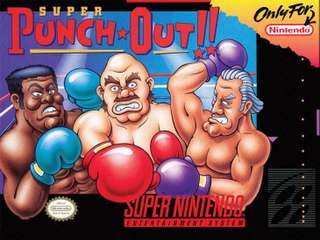
Super Punch-Out!! is a boxing video game developed and published by Nintendo for the Super Nintendo Entertainment System (SNES). It was released on October 24, 1994 in North America and again in the same region in 1996. It was released in the United Kingdom on February 10, 1995 for the same console and in Japan in 1998 for the Super Famicom through the Nintendo Power flash RAM cartridge series. The game is also included in the GameCube version of Fight Night Round 2 as an extra game due to the inclusion of Little Mac in the game. The game was released for the Wii's Virtual Console in Europe on March 20, 2009, in North America on March 30, 2009, and in Japan on July 7, 2009. The game was also released on the New Nintendo 3DS eShop on May 5, 2016. Nintendo re-released Super Punch-Out!! in the United States in September 2017 as part of the company's Super NES Classic Edition. It is the fourth game in the Punch-Out!! series, taking place after the Punch-Out!! game for the Nintendo Entertainment System (NES).
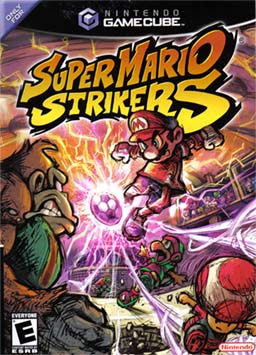
Super Mario Strikers, known in Europe and Australia as Mario Smash Football, is a 2005 sports video game developed by Next Level Games and published by Nintendo for the GameCube. The game's developers had worked on NHL Hitz Pro before development of Strikers, which served as an influence for the fast-paced and physical nature of the game. This was also the last Mario game to be released on the GameCube in Japan and North America.
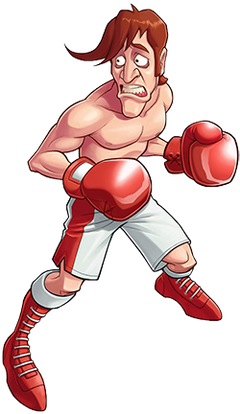
Glass Joe is a fictional French boxer from Nintendo's Punch-Out!! video game series. He first appeared in the arcade game Punch-Out!! in 1984 and three years later in the NES game of the same name. His most recent appearance was in the Wii installment of Punch-Out!!. He was originally designed by Shigeru Miyamoto and was revised by Makoto Wada for the NES game. He is voiced by Christian Bernard in the Wii game.

King Hippo is a fictional boxer from Nintendo's Punch-Out!! series. He first appeared on the Nintendo Entertainment System game Mike Tyson's Punch-Out!!, as the second competitor in the Major Circuit. Subsequent reviews have characterized him as one of the most iconic characters from the game, because he was a complicated boss to defeat. In Punch-Out!! (Wii), he returns, having a second fight where he uses a manhole to protect his weak point.

Mario Party 8 is a 2007 party video game developed by Hudson Soft and published by Nintendo for the Wii. It is the eighth main installment in the Mario Party series, as well as the first title in the series to be released for the Wii.

Donkey Kong Barrel Blast is a 2007 racing game developed by Paon and published by Nintendo for the Wii. The game was shown at the E3 convention in May 2006 for the GameCube under the title of DK: Bongo Blast, but this version was ultimately cancelled in favor of a Wii release. It was released for the Wii in Japan and the United States in 2007, and in PAL regions in 2008 with the title Donkey Kong Jet Race.

Power Punch II is a boxing video game developed by Beam Software for the Nintendo Entertainment System (NES) and originally released in North America in June 1992. The game puts the player in the role of Mark Tyler, an undefeated heavyweight champion on Earth who is invited by an outerspace boxing federation to fight the toughest challengers in the universe. Gameplay consists of the player battling each computer-controlled opponent in up to three one-minute rounds and a scoring system based on the player's performance. Training sessions between opponents allow the player to improve stats prior to an upcoming bout.

Mario Kart Wii is a 2008 kart racing game developed and published by Nintendo for the Wii. It is the sixth installment in the Mario Kart series, and was released in April 2008. Like its previous installments, Mario Kart Wii incorporates playable characters from the Mario series, who participate in races on 32 different race tracks using specialized items to hinder opponents or gain advantages. The game features multiple single-player and multiplayer game modes including two- to four-person split screen. Online multiplayer was supported until the discontinuation of Nintendo Wi-Fi Connection in May 2014. Mario Kart Wii uses the Wii Remote's motion-controls to provide intuitive and conventional steering controls. Each copy of the game was bundled with the Wii Wheel accessory to augment this feature and mimic a steering wheel.

Victorious Boxers: Revolution, known as Hajime no Ippo: Revolution in Japan and Victorious Boxers: Challenge in PAL regions, is a Japanese-developed boxing video game developed by AQ Interactive for the Wii. The game is based on the manga and anime series, Hajime no Ippo. Players are able to use the Wii controller to mimic boxing moves and knock out the opponent. The game was released in Japan on June 21, 2007 and in North America on October 23, 2007.

Little Mac is a fictional boxer and the protagonist in Nintendo's Punch-Out!! series of video games. He first appeared as a nameless boxer in the Arcade game Punch-Out!!, then was given a name and redesigned in the NES game of the same name. He is the smallest and youngest of all the boxers in the games, being only 17 years old across all Punch-Out!! games. His signature attack is the "STAR Punch". His design was changed again for the SNES Super Punch-Out!!, but reverted to his NES appearance in the Wii title, which was then used in the Super Smash Bros. series. In the NES and Wii games, Little Mac is accompanied by Doc Louis, his trainer.
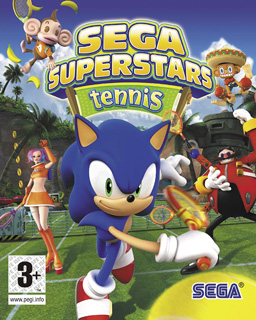
Sega Superstars Tennis is a sports video game developed by Sumo Digital and published by Sega. It is the second title in the Sega All-Stars series, preceded by Sega Superstars (2004), and crosses over characters, locations, and soundtracks from several Sega franchises, including Sonic the Hedgehog, Space Channel 5, and Super Monkey Ball.

Punch-Out!! is a boxing video game series created by Genyo Takeda, and published by Nintendo. The player controls a boxer named Little Mac, who aims to become the World Video Boxing Association (W.V.B.A.) champion.
Punch-Out!! is a series of boxing video games created by Genyo Takeda and Makoto Wada, and published by Nintendo. The main protagonist and player character of the series is Little Mac, a short boxer from the Bronx who climbs the ranks of the fictional World Video Boxing Association (WVBA) by challenging various opponents. These opponents come from different countries and feature various ethnic stereotypes associated with their place of origin.

Donkey Kong Country Returns is a 2010 platform game developed by Retro Studios and published by Nintendo for the Wii console. The game was released first in North America in November 2010, and in PAL regions and Japan the following month. The game's story focuses on an evil group of Tiki-like creatures known as the Tiki Tak Tribe that are unleashed on Donkey Kong Island and hypnotize the island's animals into stealing Donkey Kong and Diddy Kong's banana hoard, prompting the two to traverse the island to reclaim it.

Cartoon Network: Punch Time Explosion is a 2011 crossover fighting video game developed by Papaya Studio and published by Crave Games, for the Nintendo 3DS. It features characters from various Cartoon Network programs battling against one another. The game was released in June 2011 in North America and in April 2012 in Europe. An upgraded port, Cartoon Network: Punch Time Explosion XL, was released for the Wii, PlayStation 3, and Xbox 360 less than a year later.

Game & Wario is a 2013 party video game developed by Nintendo and Intelligent Systems and published for the Wii U console, named after LCD Game & Watch titles. It is the eighth installment in the WarioWare series and part of the larger Mario franchise. The story stars Wario and his friends, who take advantage of a newly released video game console with two separate screens by making games for monetary gain. Game & Wario consists of 16 minigames that exclusively utilize the Wii U GamePad and its functions. Additional modes and collectibles are also unlockable. The majority of the minigames are single-player, although some are designed for multiplayer only.


